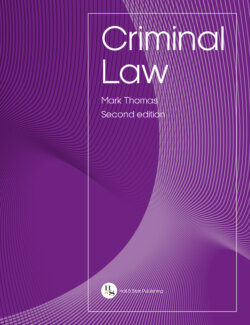Читать книгу Criminal Law - Mark Thomas - Страница 43
На сайте Литреса книга снята с продажи.
1.7.2.2 Types of evidence
ОглавлениеThere are a number of different forms of evidence that may be admitted in a criminal trial that go towards proving a fact in issue or collateral fact. These forms can be divided into a number of different categories:
Table 1.5Types of evidence (explained )
| Type of evidence | Explanation |
| Direct | This refers to evidence that is ‘first hand’, meaning that the witness who is communicating the evidence, either orally at trial (known as ‘live evidence’) or through a witness statement, witnessed the event personally. The witness may have evidence that relates to what they saw, heard, felt, smelt or tasted (ie their five senses). Such evidence is the most important and persuasive. An example could be that Jack saw Jill in an alleyway committing a murder. |
| Indirect | More often referred to as ‘hearsay’ evidence, this is admitted evidence that is not a direct testimony of what the witness saw or heard; rather, hearsay evidence concerns information that the witness was informed of by another. An example could be that Jack was told by Andy that he saw Jill in the alleyway where the murder was committed on the night of the murder, and Jack relays this information to the court because Andy is unable to do so for some reason. |
| Documentary | This refers to any evidence that is not produced in open court by live testimony. Such matters as witness statements, police interview records, CCTV recordings, etc all amount to documentary evidence. An example could be that the nightclub which is next to the alleyway has a CCTV recording of the alleyway showing Jill committing the offence. |
| Circumstantial | This refers to evidence that is neither direct nor hearsay, but rather goes to prove, by inference, a particular fact in issue. The focus on such evidence, therefore, is on the inference that may be drawn by the presence of such evidence. An example could be that Jack saw Jill running from the alleyway where the murder was committed. |
| Real | This refers to the physical objects relevant to the criminal offence, eg a knife or a gun. Such evidence is useful but only where it is used or considered alongside other evidence. An example could be that the police recover a knife from the alleyway where the murder was committed, Jack says that he saw Jill with the knife and it is discovered that Jill’s fingerprints are on the knife. |
| Expert | This refers to the evidence given by an expert in relation to a matter that requires clarification or detailed knowledge in that area. An expert may be required to explain how a gun works, or whether the defendant is suffering from insanity, etc. An example could be that expert evidence is admitted to explain the presence of Jill’s fingerprints on the knife. |
